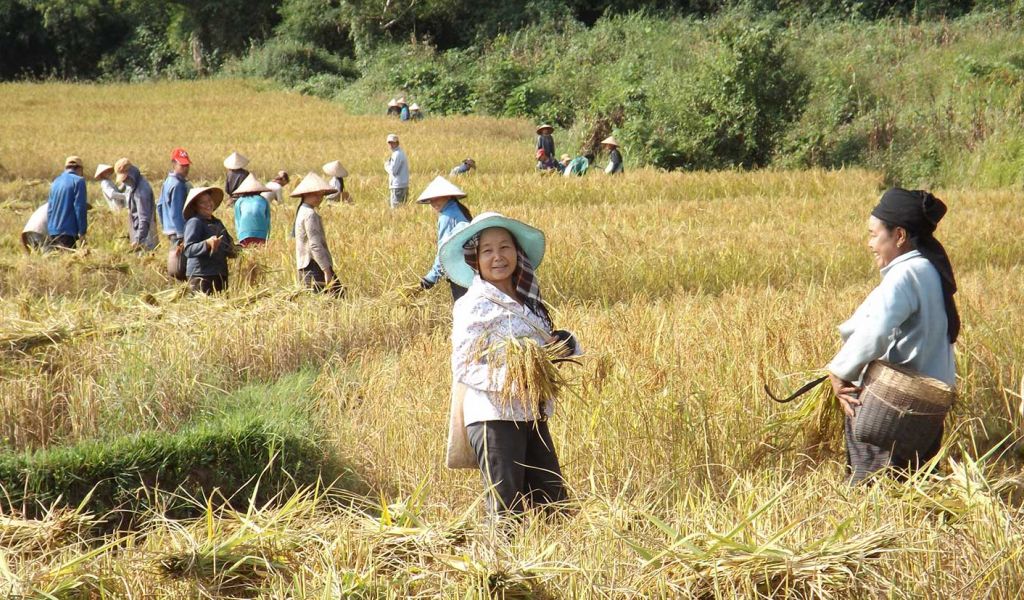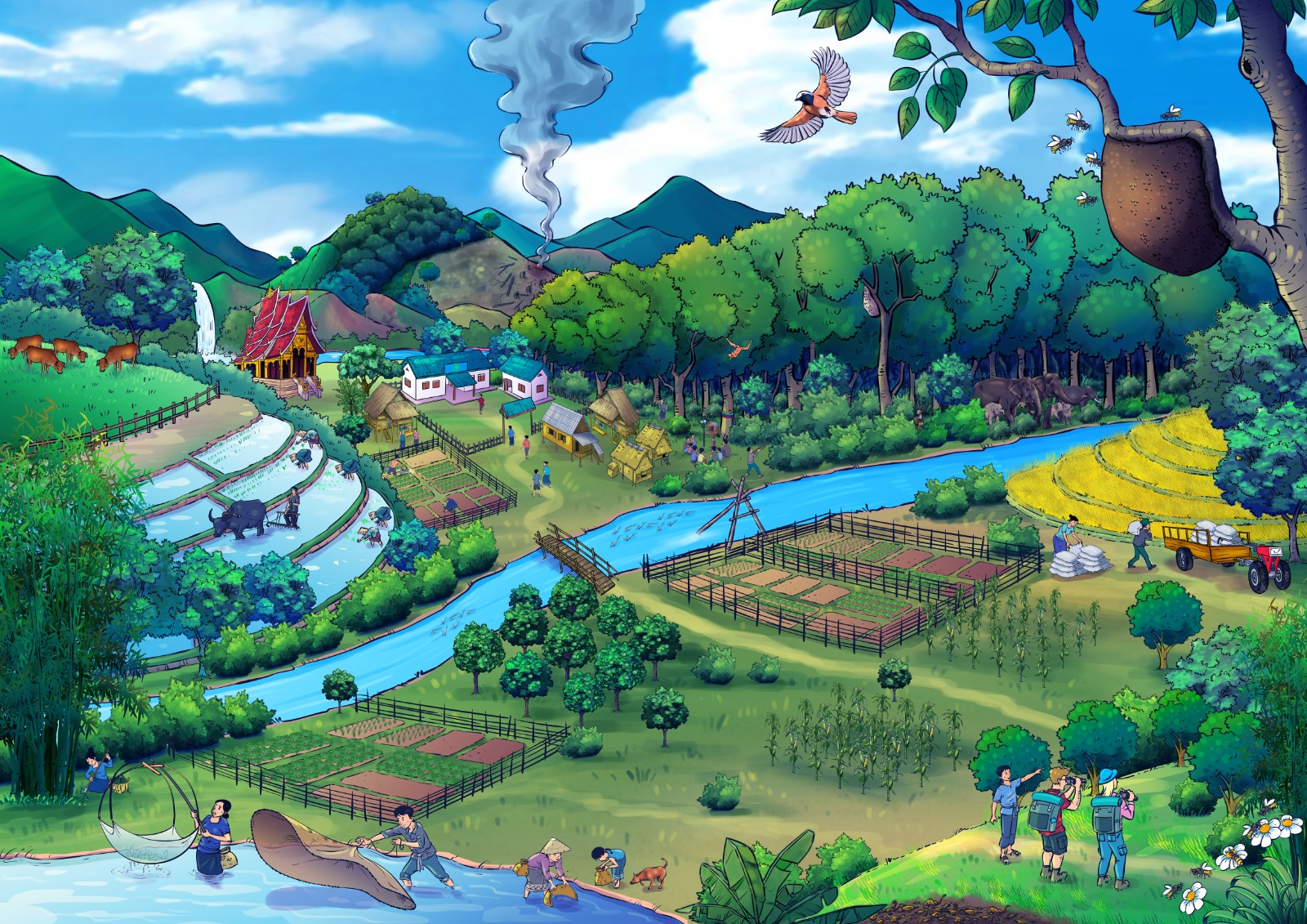What is Agrobiodiversity?

Agrobiodiversity is all about the incredible variety of living things that make our farms, forests, and grasslands rich and productive. This includes the rice, vegetables, fruits, and herbs we grow for food. It also encompasses the many animals we raise, the wild plants and mushrooms we gather from the forests, the fish from the rivers, and all the helpful insects and creatures that live in the soil. Having this rich tapestry of life is essential for our communities in Laos. It provides us with nutritious food, valuable resources like medicines and building materials, and a connection to our natural heritage. Agrobiodiversity allows us to use these resources wisely and ensures everyone has access to them.
According to the Food and Agriculture Organisation (FAO), agrobiodiversity is: “the variety and variability of animals, plants and micro-organisms that are used directly or indirectly for food and agriculture, including crops, livestock, forestry, and fisheries. It comprises the diversity of genetic resources (varieties, breeds) and species used for food, fodder, fibre, fuel, and pharmaceuticals. It also includes the diversity of non-harvested species that support production (soil micro-organisms, predators, pollinators), and those in the wider environment that support agroecosystems (agricultural, pastoral, forest, and aquatic) as well as the diversity of the agroecosystems.” [1]
Multi-functional landscapes
A typical farm might focus on growing just one or two main crops. But multi-functional landscapes – the central element of agrobiodiversity – take a different approach as they go beyond simply growing rice and vegetables. They aim to create a balanced environment where all living things can thrive. By incorporating natural elements, multi-functional landscapes benefit from the help from all sorts of creatures. Birds can become natural pest controllers, while insects help pollinate crops. This not only reduces the need for pesticides but also improves the overall health of the farm.  Imagine a Laotian landscape: rice paddies shimmer in the centre, bordered by fruit trees and flowering hedgerows buzzing with bees. Bamboo groves stand tall, while ponds teeming with fish dot the landscape. Chickens peck for scraps, and families harvest mushrooms from the nearby forest. This isn’t just a farm, it’s a multi-functional landscape. It provides food security, income from fruits, vegetables, fish, and livestock, all while protecting the environment through natural pest control and sustainable resource management.
Imagine a Laotian landscape: rice paddies shimmer in the centre, bordered by fruit trees and flowering hedgerows buzzing with bees. Bamboo groves stand tall, while ponds teeming with fish dot the landscape. Chickens peck for scraps, and families harvest mushrooms from the nearby forest. This isn’t just a farm, it’s a multi-functional landscape. It provides food security, income from fruits, vegetables, fish, and livestock, all while protecting the environment through natural pest control and sustainable resource management.
[1] FAO (1999): Agricultural Biodiversity, Multifunctional Character of Agriculture and Land Conference, Background Paper 1, Maastricht, September 1999. https://www.fao.org/3/x2775e/X2775E03.htm




